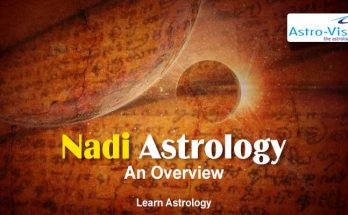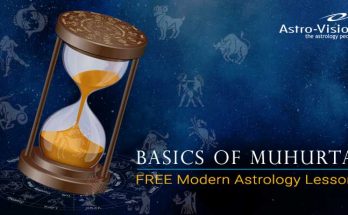Solarization of Lunar Realms
The Nakshatras carry the concept of balance between divinity and humanity. The deities of the Nakshatras are presented to explain or rationalize an important aspect of the nature of the world, both above and below. The stories with their divine players were understood to not only to be told as such but to create a bi-directional pathway from the metaphysical celestial world to the terrestrial, physical one.
Every Nakshatra is ruled by a certain devata, deity or creative impulse of nature. By knowing the metaphorical personality, temperament and characteristics of the devata, one obtains a good deal of insight into the nature of the Nakshatras and the mechanics of their operation as reflected in individual behavior, as seen in the horoscope of a person. This information is useful in anticipating the correct type of behavior for a specific span of time and for identifying the factors of personality projected to be exhibited by an individual. The behavior of a Nakshatra is triggered, as designated by the Jyotisha texts when the Moon passes through that Nakshatra’s time and space in the heavens. As part of their practice, seasoned astrologers use the principles of Jyotish to compare the indications of the devata and the personality traits that the asterism tends to bestows on a person born under that Nakshatra’s period of influence. The majority of deities of the various Nakshatras are solar deities or at least deities of light as delineated here under.
The regent’s meaning and references to the 27 Nakshatras can be revisited as follows:-
1) Aswini – Aswins • Means “possessing horses” • Twin sons of Surya or Vivaswan, the Sun god • Appear in the sky just before dawn • Represents the healing power of light moving from darkness to light at dawn.
2 ) Bharani – Yama • Means “restraint” • Born from Vivaswat (the Sun) • Represents the setting Sun • Lord of the dead who recommends corrective actions to bring the souls of the departed back to the light • Judges souls on the Deva Patha (Milky Way between Scorpio and Sagittarius).
3) Krittika – Agni • Means “Lord of Fire” • Agni is said to put the fire in the Sun • Represents fire or light on the Earth- Digestive faculty,gastric fluid which helps produce Soma in the body • Twin brother of Indra who is an Aditya.
The Nakshatras are generally conceived in terms of the Moon, but it is significant in understanding the implications of Nakshatra effects to know the impact of the characteristic identities of their ruling lords or administering regents. In fact, the Nakshatras speak to the effects of life on earth and in heaven as marked by the passage of the Moon through fiduciary or marker stars (also called Taras.) but, again, the regents of the various spans of the sky marked by the Moon’s passage are primarily under the influence of the various identities of the Sun and its multiple manifestations of light.
4) Rohini – Brahma (also Prajapati) Creator of the Universe • Created the world from the luminous golden egg called Hiranyagarbha • The luminous egg appears to be the mass of stars at the center of the Milky Way galaxy.
5) Mrigasira – Soma • Means “juice, extract” • Soma is the light in the Moon; reflected from the Sun • Soma shines with a thousand • Way; in the mid-heaven – the Moon; on the earth – the juice of the Soma plant.
6) Aridra – Rudra • Means “The roarer” also called “(Earva” or “One who can kill the forces of darkness • Rudra is associated with the jivatma or energy of the Sun and with storms • An Aditya or form of the Sun.
7) Punarvasu – Aditi • Means ” Freedom ; infinity; not cut or divided • Mother of the Adityas (forms of the Sun including Surya).• Celestial mother of every existing form and being • Adita = a Name given to “the Sun.”
8) Pushymai – Brihaspati • Means ” Lord of Prayer” – Son of Rishi Angiras (Angiras is linked to Agni) • Shiva granted Brihaspati the role as preceptor of the Devas (the shining ones) and as Guru of the Planets.
9) Aslesha – Naga • Means “Not Moving;” a snake • a name of the Sun • inhabiting the waters or lives in the sunless, jewel-lit city of Bhoga-vati in Patala, the underworld.
10) Makha – Pitris • Means , “the fathers,” or “ancestors ” • Some of the pit[s (divine) dwell in the heavenly abodes while others (deceased humans) dwell in the netherworlds. • From them all the Manus and all progeny at the new creation are produced. • The Milky way is considered the path that the Pitris travel on.
11) Purva Phalguni – Bhaga • Means ” the Dispenser” • Bestows wealth and presides over love and marriage. • Brother of the dawn; Sexual passion; Female organs • Had his eyes (light) taken out by Shiva.
12) Uttara Phalguni – Aryaman • Means a “bosom friend, Companion” • An Aditya or Sun God. • The epitome of nobility and high conduct • Embodiment of the Sun as the the Cosmic Eye watching the affairs of man. • Chief of the manes whose path is the Milky Way.
13) Hasta – Adityas • Means “of Aditi.” • Solar deities who are children of Aditi, i.e. Dhata, Mitra, Aryaman, Rudra, Varuna, Surya, Bhaga, Vivaswan, Ansa, Savita, Twasta, and Vishnu. Indra is the eldest •All these 12 Adityas are the shining extensions of Lord Vishnu in the form of the Sun god.• Aditya used in the singular means the sun god.
Also associated with Savitri or Savita • Means “impeller, rouser, vivifier” • Sometimes identified with– and at other times distinguished from—Surya, “the Sun”. • Considered as the vivifying power of the Sun; the aspect of the Sun that wakes people in the morning. • The sun before sunrise is called Savitri, and after sunrise until sunset it is called Surya.
14) Chitta – Twashtri • Means ” Divine builder or architect” • An Aditya or solar deity and is the sun of Kashyapa and Aditi. • The heavenly builder said to have made the three worlds with bits and pieces of the Sun god Surya’s rays • Came from the navel of Vishwakarma. Twashtri sometimes identified with the creative power of Vishwakarma.
Vishwakarma • Means “Creating everything” • Carries the functions of Prajapati and Brahma; the personified energy of Omnipotence• Father of 5 Sons Ajaekapad, Ahirbhudhnya,Twashta, Rudra and Nala • Maker of divine instruments such as Indra’s thunderbolt; Grandfather of Yama, Yami and the Aswins; • One of the Adityas.
15) Swati – Vayu • Means “Blower” Lord of the Wind; An atmospheric deity; • Also identified with the Vata and with Prana. • One of the Panchamahabhutas or five primordial elements. All the deities of bodily functions operate only when empowered by Vayu •
16) Visakha – Indragni • Means having Indra and Agni as dieties • Combined Indra and Agni is used frequently in the Veda.
17) Anuradha – Mithra • Means ” Friend,Ally ” • An Aditya generally invoked together with Varuna and often associated with Aryaman • Described as calling men to activity or to join together. Sustaining earth and sky and beholding all creatures with unblinking eye.
18) Jyeshta – Indra • Means “to subdue or conquer” or “to drop”. • Cheif, lord of the sky and atmosphere • Conquers darkness with his thunderbolt • The twin brother of Agni • An Aditya son of Aditi.Indra slayed Vritra (“the obstacle”), liberating the celestial rivers/waters; Indra broke open the cave of the demon Vala, releasing the cows (rays of light) within.
19) Mula – Nirriti • Means “absense of order or law or light,” “dissolution” • Signifies the bottom or lower depths of the earth • The masculine form of the name “Nir[ta” is a name of Rudra, an Aditya • Sits on the root of the Milky Way between Scorpio and Sagittarius.
20) Purvashada – Apa • Means “Waters/Rivers” . Agni, the god of fire, has a close association with the water. Agni(fire) is referred to as “Apam Napat “offspring of the waters”.
21) Uttarashada – Vishwadeva • Means “all divine” or all Devas collectively; God of the Universe.
22) Sravana – Vishnu Vamana • Means dwarf incarnation of Vishnu • He asked for three feet of land from Emperor Bali. Vamana grew huge and covered the Universe in 3 steps. • Some of the scholars equate the three steps to the movement of the Sun from sunrise,high noon, to sunset• Surya the solar diety, is an aspect of Narayana or Vishnu.
23) Dhanishta – Vasu • Means Dweller or “Dwelling • Eight Vasus representing aspects of nature, representing cosmic natural phenomenon. Prithivi (earth); Agni (fire); Vayu (wind); Antariksha (space); Aditya (Sun) Dyaus (sky); Chandramas (Moon) Nakstrani(Stars) • A ray of light, spirit or soul considered as the Supreme Being or Soul of the Universe.
24) Satabhisha – Varuna • Means lord of the Waves or Ocean • Varuna is considered the god of all forms of the water element, particularly the oceans and the laws of the waterworld •Mostly concerned with moral and societal affairs than being a deification of Nature. Together with Mitra-originally ‘agreement’ (between tribes) personified•He aspects of a solar diety though, when opposed to Mitra (a Vedic term for Surya), he is associated with the night, and Mitra with the daylight.
25) Purva bhadrapada – Ajaekapad • Means Single foot of the Sun = Sunbeam (some say a “one-footed goat”). Aja = Unbom One (the Sun); Eka = Single, Pad = Foot.
26) Uttara bhadrapada – Ahirbudhnya • Means “one who knows serpents” Ahi = “Snake,or belonging to the depths or being on the ground or at the base • Son of Viswakarma and Surabhi ; one of the 11 Maruts • ‘Ahirbudhnya’ is one who, in the form of an ‘ahi’ or serpent, is the ‘budhna’ or foundation of the world • The chief of the Nagas lives in the Sunless netherworld which some consider the foundation of the worlds above.
27) Revati – Pushan • Means ” cause to thrive or grow” • A vedic solar diety and one of the Adityas.Responsible for marriages,journeys,roads, and the feeding and protection of cattle • Conducts souls to the other world• Protects travellers from bandits and wild animals • Protects men from attack and exploitation by others • sometimes described as driving the Sun in its course across the sky.
Areas of Further Research
While this article has focused on expanding awareness about the interpreted meaning of Nakshatra regents, the same analytic process can be applied to the Nakshatra names themselves. One can gain much about understanding the background context of myth, consciousness and the astronomical functions of the Moon and its phases, the Sun’s path, its journey above and below the equator, its various states of light and the back and forth churning of the Ocean of Milky. Also add additional layers of meaning are possible by exploring the metaphoric implications of the Milky Way and the intersection of the ecliptic with the celestial equator and other similar perspectives.
All these under-researched areas of the Nakshatras come alive with deeper analysis. For example, the word “pad” or “pada” can mean “foot” but also “foot path.” The concept of path or journey of celestial objects can be very revealing. Nagas or snakes represent orbits, as does the image of “Sita”, translated as “furrow” representing the path of the Sun. The word “bhadra” while meaning “excellent,” is also a name given to a section of the Milky Way. “Purva” and “Uttara” can also mean “Northern and Southern” If one goes further to adjust the Nakshatras to Precession and various ages, a different context is generated, such as Krittika Nakshatra being at the Vernal Equinox Point around 2976 B.C. during the time of Maharishi Lagadha. We see images of the rainy season occurring, the analogies of bulls and the mechanics of hydrology around the region of the Pleiades, near Taurus. These astronomical and meteorological factors speak to the images of the monsoon and its relationship to the Somadhara or the flowing river of Soma we call the Milky Way.
Conclusion
When we bring in the concept of the Nakshatra Regents being primarily gods of light and agents of various nuances of light, especially the Sun’s light, we then uncover deeper meanings for the Nakshatras. Even the term “Jyotisha” can be interpreted as “Master of Light.” The astrologer uses light or insight with the aid of the nine planets to help people understand the nature of their behavior over time. This article has attempted to stimulate a deeper understanding of the light-filled correlation of myth, etymology, astronomy, and consciousness to bring out new possibilities for interpreting the meaning of the Nakshatra deities.
We have seen from scholars such as Prof. B. Suryanarain Rao that there are multiple levels of meaning with Sanskrit terms and that it is often difficult to find corresponding words and concepts in English. With a deeper broader understanding of the meanings of the names of Nakshatra deities, we will help the field of Vedic astrology avoid faulty interpretations and obscure highly stretched derivations of Sanskrit terms. Nakshatra lords also play an important role in determining the essential qualities of a person’s disposition and help Vedic astrologers assess the outcome of a person’s expressed energy and ambition. The Vedic myths, with their divine players of light, provide the Vedic astrologer with a luminous code that reveals a bi-directional pathway from the metaphysical celestial world to that of the terrestrial physical life on earth •
Courtesy: MODERN ASTROLOGY(Author :Dr. William R. Levacy)








One Comment on “Solar Regents of the Nakshatras”